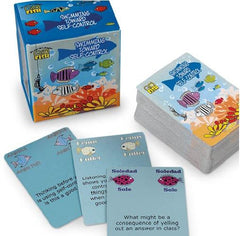Boundaries Baseball
Boundaries Baseball
Boundaries Baseball helps children understand and respect boundaries. Boundaries are essential for positive relationships with peers and adults; children who act out are often asking for the security of clear boundaries and the skills needed to respect them.
Boundaries Baseball utilizes a baseball diamond format as a visual reminder for not going out of bounds. As part of the action of the play, students will also have opportunities to toss a “ball” so that it stays within the boundaries of a “strike zone.” Game cards teach four kinds of boundaries: (1) Saying and accepting “No,” (2) Managing strong emotions (called feelings in the game), (3) Respecting personal space and property, and (4) Relationship/communication limits (called friendship in the game).
Players use a special spinner to see what happens for each pitch. For example, they could get a strike, a ball, a single, or a pop fly out. Players move their pawns, counterclockwise around the diamond. Their pawns are baseball players (see photo). The players then advance according to the instructions on the spinner and pick and answer cards that match the color of the space landed on. For example, a strike results in going back one space, a ball advances the player three spaces, and a single brings the player to the next base. The four decks of cards correspond to the four categories of boundaries mentioned above. When players reach home plate, they add one to their score on the scoreboard, which is pictured at the top of the game board. A summary of the rules of baseball is included for those players not familiar with the game of baseball.
Grades 1– 6
Learning Objectives — Players will
1. Understand the concept of a boundary and the four major kinds of boundaries discussed in the game.
2. Learn how to express anger and other emotions in socially acceptable ways.
3. Learn important skills for improving peer relations and other social interactions.
4. Improve relationships with parents, teachers, and other authority figures.
5. Improve their sense of self and self-esteem as a result of increased understanding of boundaries and how to successfully deal with them.
6. Improve their likability and popularity with other children and adults by showing respect for personal space, property, and other boundaries.






